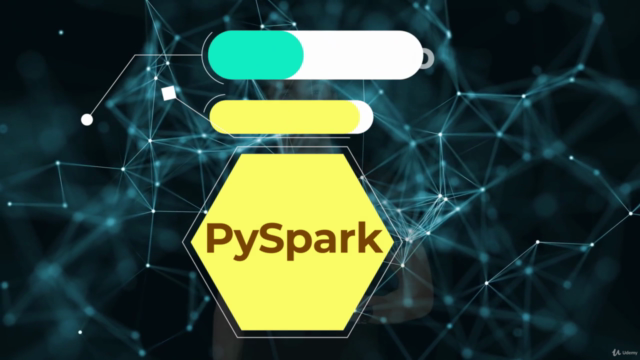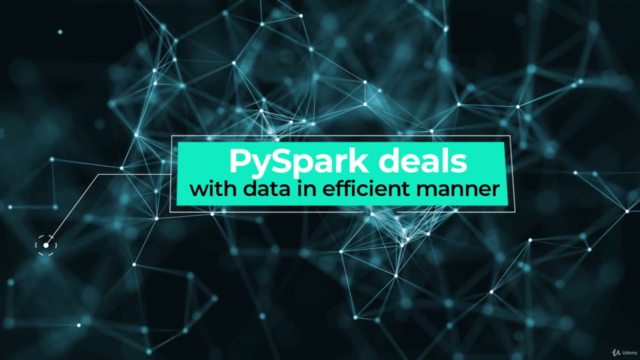PySpark & AWS: Master Big Data With PySpark and AWS

Why take this course?
Based on the comprehensive list of keywords and topics provided, here's a structured approach to understanding and implementing PySpark with AWS in a project-based learning environment:
Understanding the Basics
- Introduction to Big Data analytics: Learn about the importance of data analysis and the challenges it addresses.
- Data analysis fundamentals: Understand the principles of data cleaning, transformation, and analysis.
- Machine learning (ML) with PySpark: Explore how PySpark can be used for building ML models.
- Spark RDDs and Dataframes: Get familiar with the core abstractions in Spark, namely Resilient Distributed Datasets (RDDs) and Dataframes.
Setting Up the Environment
- Spark ecosystem: Set up a local or remote Spark environment using Hadoop as a background.
- PySpark and AWS collaboration: Learn how to integrate PySpark with AWS services for scalable data processing.
- Databricks setup: Configure Databricks workspace for executing PySpark notebooks.
- Spark local setup: Install and configure Spark locally for development purposes.
Core PySpark Skills
- Spark RDD transformations and actions: Master the most common RDD operations to perform distributed data processing.
- Spark Dataframe transformations and actions: Learn how to use Dataframes for more structured data processing, including complex transformation patterns.
- Spark SQL queries: Understand Spark SQL's capabilities for executing SQL queries on Dataframes.
Advanced PySpark Concepts
- Infer Schema vs Provide Schema: Learn how to handle data schemas in PySpark.
- Filter rows, count, distinct, duplicate, sort, order By, Group By: Perform common data manipulation and aggregation operations on Dataframes.
- UDFs (User-Defined Functions): Create custom functions for specific data processing needs.
Machine Learning with PySpark
- Collaborative filtering: Understand and implement recommendation systems using the ALS (Alternating Least Squares) model.
- ALS model: Dive deep into how to use the ALS algorithm for building a recommender system in PySpark.
Streaming Data with Spark
- Spark Streaming: Learn how to process real-time data streams using Spark Streaming.
- Word Count example: Build a simple Spark Streaming application to count word frequencies.
ETL Pipeline and AWS Services
- ETL pipeline: Design and implement an Extract, Transform, Load (ETL) process for data integration.
- Change Data Capture (CDC): Understand CDC and how it can be used to capture changes in the database.
- Replication: Learn about data replication strategies between different systems or environments.
AWS Services Integration
- AWS Glue Job: Use AWS Glue for ETL tasks and automate data preparation jobs.
- Lambda Function: Write serverless functions on AWS to perform specific tasks in response to events.
- RDS: Set up a relational database service (RDS) on AWS for structured storage and querying.
- S3 Bucket: Use Amazon S3 for scalable object storage.
- Data Migration Service (DMS): Migrate databases with minimal downtime using AWS Database Migration Service.
- PgAdmin: Manage PostgreSQL databases using PgAdmin, and integrate them with PySpark for analysis.
Practical Application and Projects
- Spark Shell Job: Write and execute Spark jobs from the Spark shell for quick testing and development.
- Full Load Pipeline: Create a pipeline to load data into AWS, transform it as needed, and make it available for analysis or machine learning tasks.
- Change Data Capture Pipeline: Develop a CDC pipeline to continuously capture changes in data and respond accordingly.
Real-World Implementation
- Capstone Project: Apply all the learned concepts in a comprehensive capstone project that showcases your ability to handle real-world Big Data problems using PySpark and AWS.
By following this structured approach, you can systematically learn and apply PySpark with AWS, ensuring that you gain both theoretical knowledge and practical skills necessary for handling large-scale data processing tasks effectively.
Course Gallery




Loading charts...
Comidoc Review
Our Verdict
The PySpark & AWS course is an ideal starting point for beginners wanting to explore big data processing. Though there are areas to improve, particularly in the AWS sections, it succeeds at providing hands-on experience with various essential tools and concepts within PySpark. To optimize your learning experience, consider supplementing this course with additional resources on AWS integration and refining Spark programming techniques. Remember, mastery of big data processing emerges from persistent practice and continuously expanding your knowledge base.
What We Liked
- Comprehensive coverage of PySpark and AWS with practical projects to reinforce learning.
- Detailed explanations for beginners, making it accessible for those new to the Spark ecosystem.
- Dynamic problem-solving approach in addressing tech service updates and errors.
Potential Drawbacks
- Lacks in-depth explanations of certain concepts, assuming prior foundational knowledge.
- AWS sections can be confusing with outdated content and some critical steps missing.
- Some modules like Collaborative Filtering and Spark Streaming seem rushed without proper context.